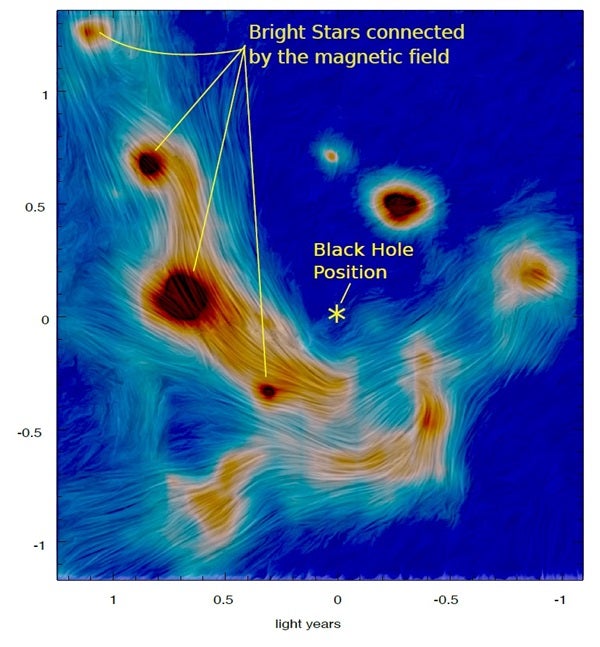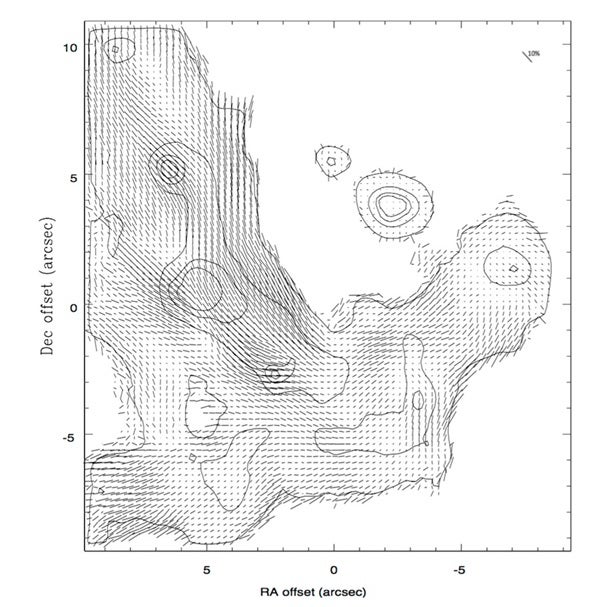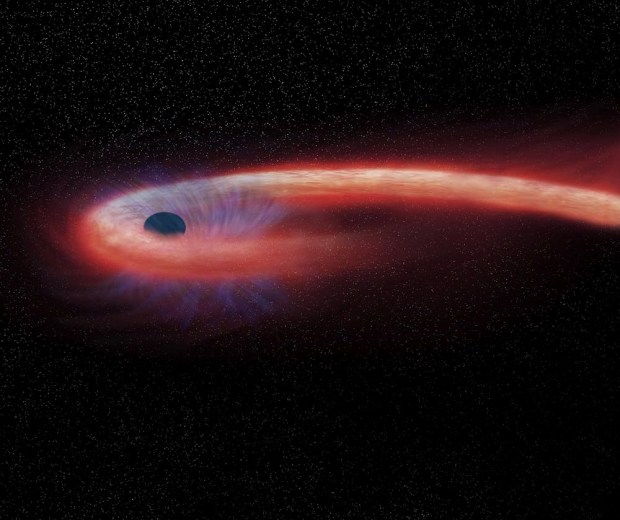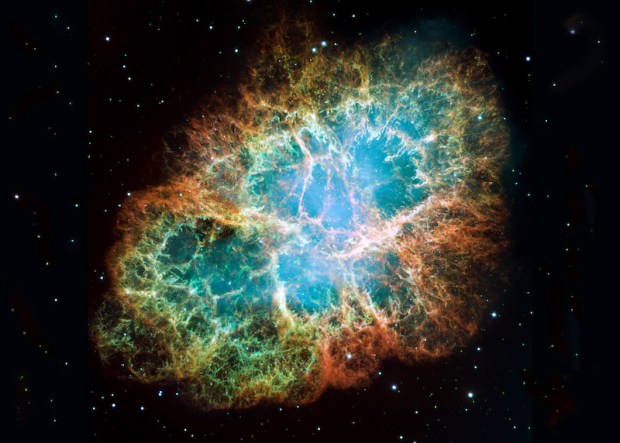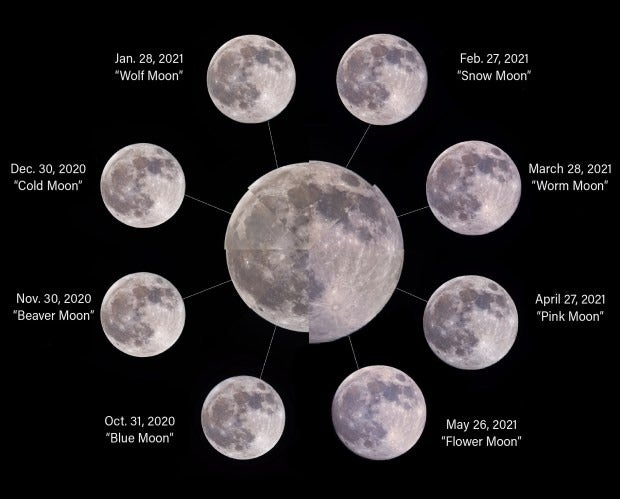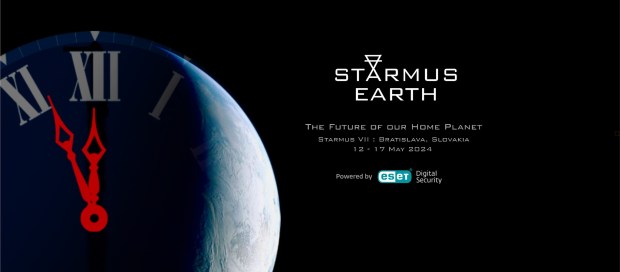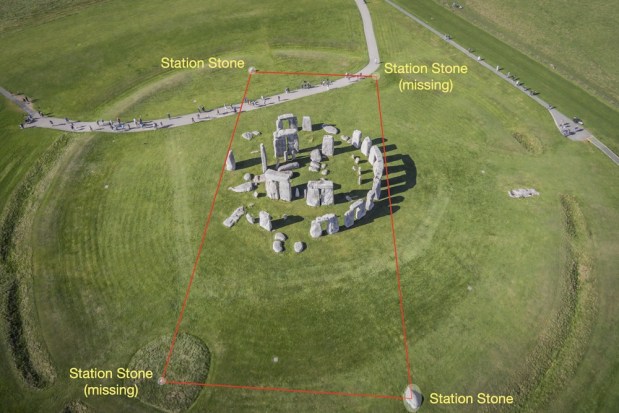With such a monstrous and intriguing object located in the center of our galaxy, you would think that astronomers know a great deal about it. However, thanks to the fact that the Milky Way is full of light-blocking gas and dust, many questions still remain about the structure and behavior of Sagittarius A*.
In a paper published last month in the Monthly Notices of the Royal Astronomical Society, astronomers shed a bit of light on this black hole by producing a new high-resolution map that traces the magnetic field lines present within gas and dust swirling around Sagittarius A*. The team created the map, which is the first of its kind, by observing polarized infrared light that is emitted by warm, magnetically aligned dust grains.
“This collaborative work is an exciting step forward in our collective efforts to gain a greater understanding of our own galaxy and the supermassive black hole at the center of it,” said Chris Packham, a professor of physics and astronomy at the University of Texas at San Antonio, in a press release. “It also demonstrates the importance of access to the largest telescopes using advanced cameras [and] techniques.”
To create the detailed map, which spans about one light-year on each side of Sagittarius A*, the researchers used the CanariCam infrared camera on the Gran Telescopio Canarias (GTC), located on the island of La Palma, Spain. Because infrared light passes straight through the visual-light-blocking dust located between Earth and the Milky Way’s core, astronomers were able to view the area around Sagittarius A* much more clearly than would have been possible with other types of telescopes. Furthermore, since CanariCam combines infrared imaging with a device that preferentially filters polarized light associated with magnetic fields, the team was able to trace the magnetic field lines around Sagittarius A* in unprecedented detail.
“Big telescopes like GTC, and instruments like CanariCam deliver real results,” said Pat Roche, a professor of astrophysics at The University of Oxford, in a press release. “We’re now able to watch material race around a black hole 25,000 light-years away, and for the first time see magnetic fields there in detail.”
Based on map, the team also thinks that a smaller magnetic field exists near the core of the Milky Way, and that the field gets stretched out as intervening filaments are pulled apart by gravity. The researchers point out that the filaments, which are several light-years long, seem to pool below (on the map) Sagittarius A*. The team believes that this likely marks a location where streams of gas and dust orbiting the black hole converge.
Using the CanariCam on GTC, the researchers plan to continue probing the magnetic fields traced in dusty regions throughout our galaxy. Additionally, they hope to continue gathering more detailed observations of the core of the Milky Way to further study the magnetic field around Sagittarius A*. In particular, they would like to determine how the magnetic field interacts with clouds of dust and gas that orbit farther from the black hole, at distances of several light years.
But for now, we’ll just have to be satisfied with the latest piece of the puzzle.

